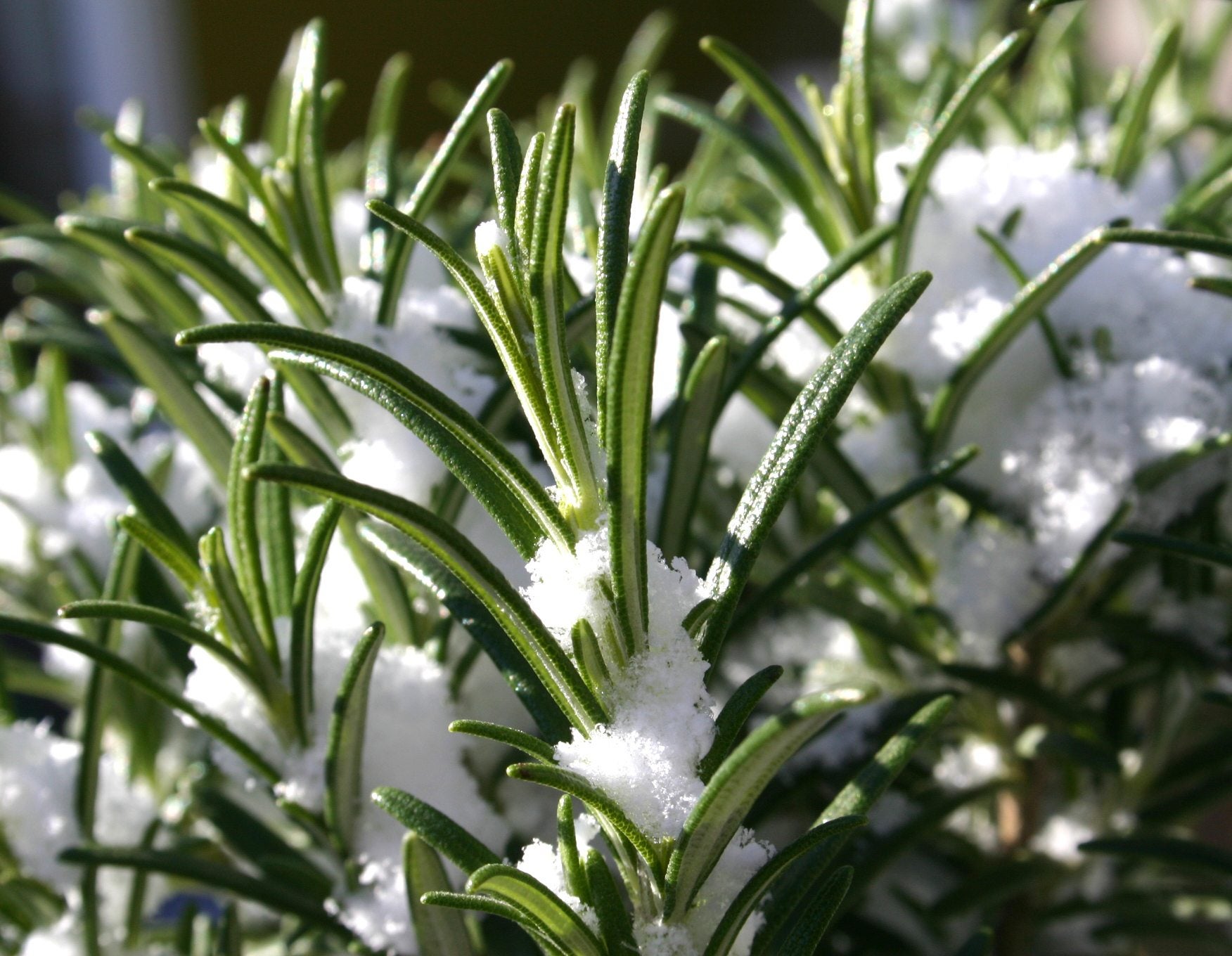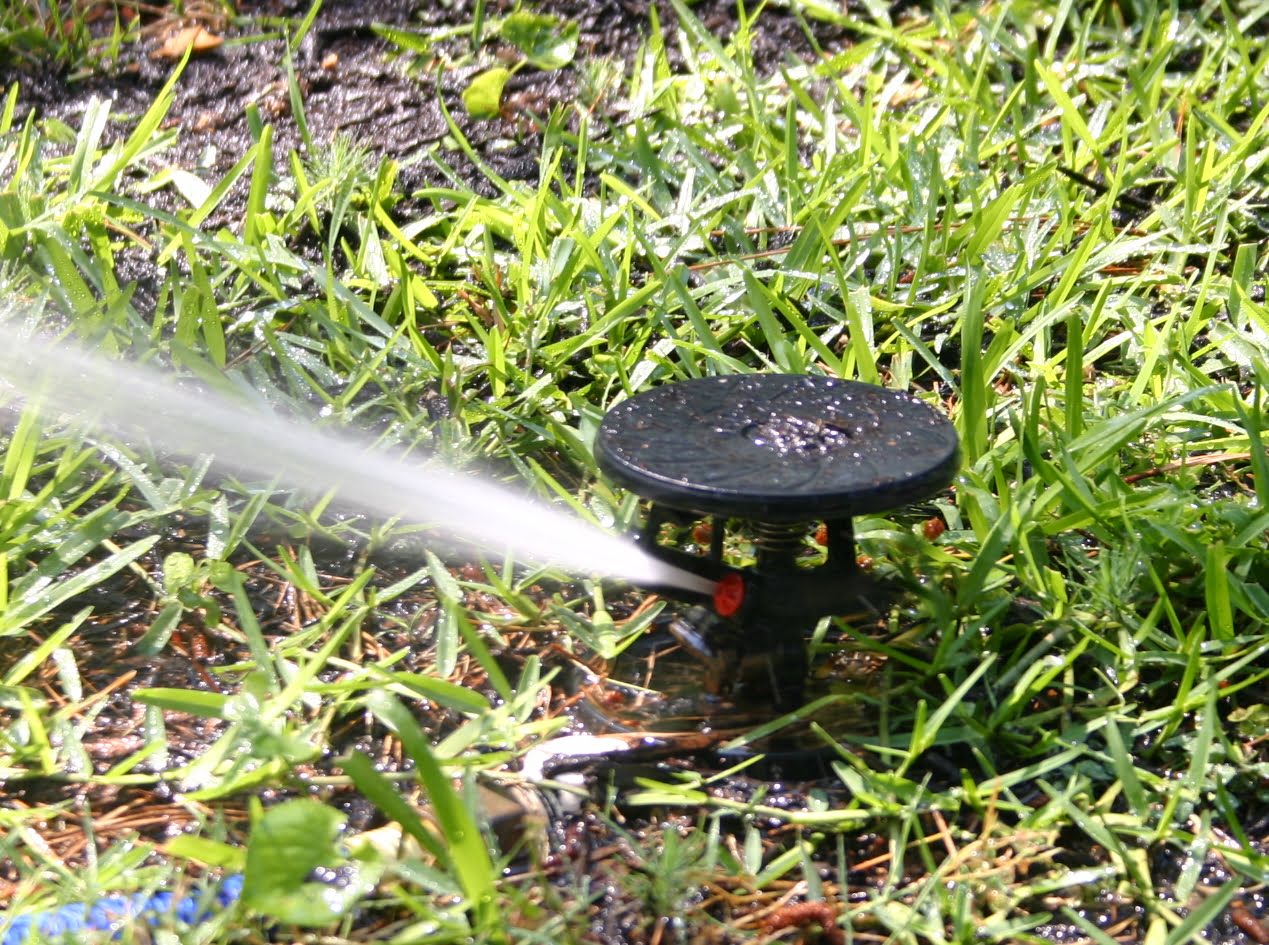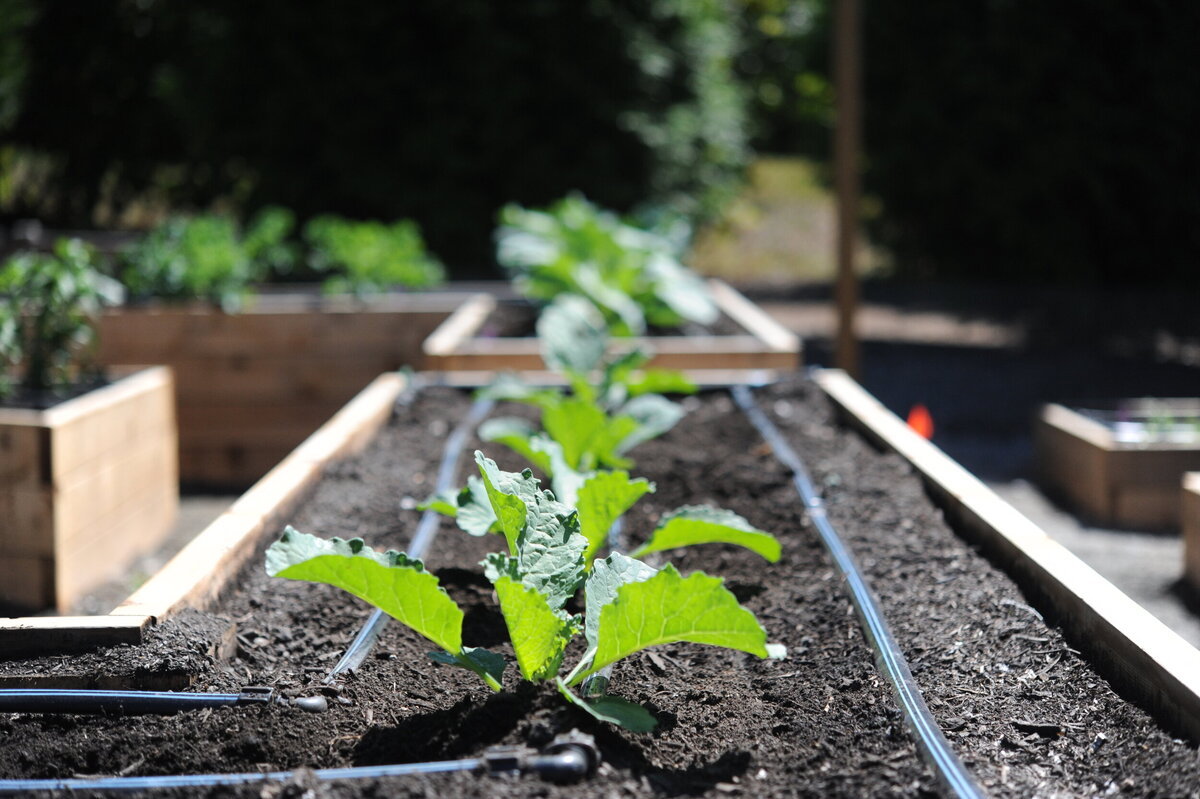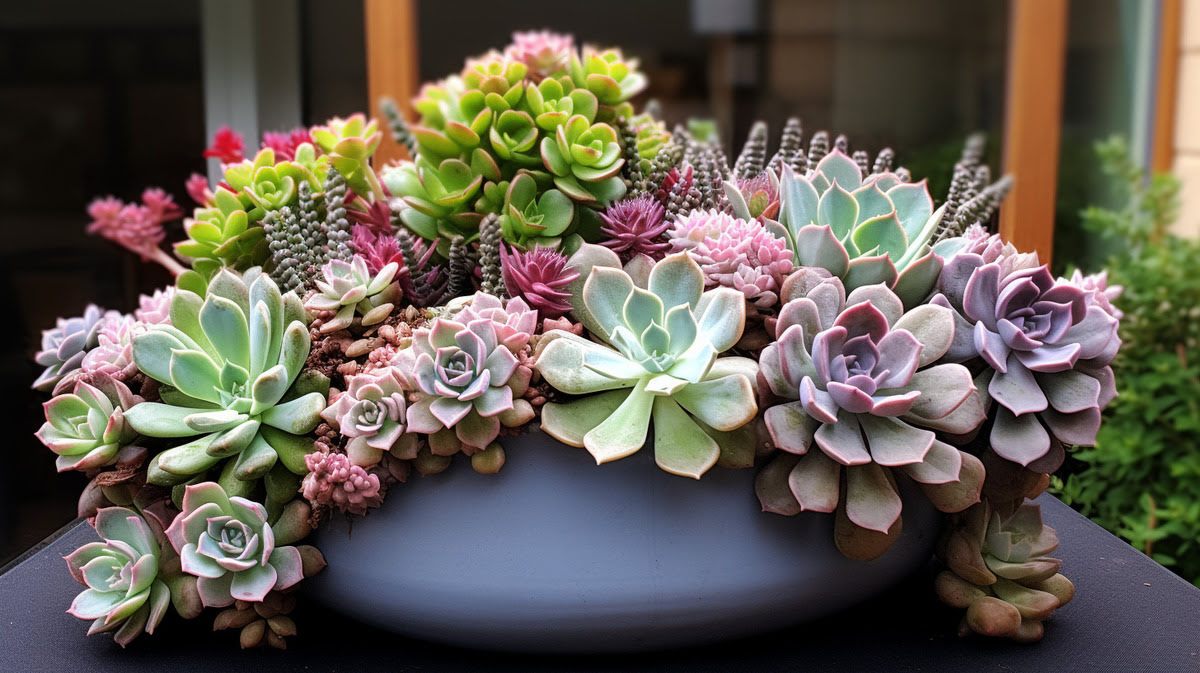Home>Types of Gardening>Edible Gardening>How To Keep Rosemary Over The Winter


Edible Gardening
How To Keep Rosemary Over The Winter
Modified: February 9, 2024
Learn the best methods for keeping your rosemary plants thriving throughout the winter with this comprehensive guide to edible gardening.
(Many of the links in this article redirect to a specific reviewed product. Your purchase of these products through affiliate links helps to generate commission for Chicagolandgardening.com, at no extra cost. Learn more)
Table of Contents
- Introduction
- Preparing Rosemary for Winter
- Choosing the Right Location
- Transplanting Rosemary Indoors
- Providing Adequate Light
- Regulating Temperature and Humidity
- Watering Rosemary
- Pruning and Maintaining Rosemary
- Protecting Rosemary from Pests and Diseases
- Winter Harvesting Tips
- Storing Rosemary for Extended Periods
- Conclusion
Introduction
Welcome to the world of edible gardening! Growing your own food is not only a rewarding experience, but it also allows you to have control over the quality and freshness of your produce. And what better way to start your edible garden than with rosemary?
Rosemary, with its fragrant aroma and versatile culinary uses, is a popular herb in many kitchens. It adds depth and flavor to a variety of dishes, from roasted meats to soups and sauces. But what do you do when winter approaches, and your beloved rosemary plant is at risk? Don’t worry, we’ve got you covered.
In this article, we will guide you through the process of keeping your rosemary plant thriving throughout the winter months. We’ll cover everything from preparing your plant for the colder weather to harvesting and storing your precious harvest. So, let’s dive in!
One of the essential steps in preparing your rosemary plant for winter is ensuring it is in good health and strength before the colder temperatures set in. This includes regular pruning and maintenance, as well as checking for any signs of pests or diseases. By taking proactive measures, you’ll give your rosemary plant the best chance of surviving and thriving during the winter months.
Next, let’s discuss the importance of choosing the right location for your rosemary plant during winter. While rosemary is a hardy herb, it is still susceptible to frost and cold temperatures. Finding a sheltered area in your garden or deciding whether to transplant your rosemary indoors will depend on the severity of your winter climate.
Transplanting rosemary indoors can provide added protection against freezing temperatures. In this section, we’ll guide you on the proper techniques to move your rosemary plant from the garden to a pot or container. We’ll also discuss the necessary steps for acclimating your plant to its new indoor environment.
Rosemary requires an adequate amount of light to thrive, even during the winter. In this section, we’ll explore various methods to ensure your rosemary plant receives sufficient light, whether through natural sunlight or artificial grow lights. We’ll also provide tips on how to position your plant for optimal light exposure.
The next factor to consider when keeping your rosemary plant healthy during winter is regulating the temperature and humidity levels. Rosemary prefers cooler temperatures but is sensitive to extreme cold or heat. We’ll share some tips on how to maintain an ideal temperature range and humidity level for your plant.
Preparing Rosemary for Winter
As the colder months approach, it’s important to prepare your rosemary plant for the winter in order to ensure its survival and healthy growth. Here are some steps you can take to get your rosemary ready:
1. Pruning: Before the first frost, give your rosemary a gentle pruning to remove any dead or damaged branches. This will help promote new growth and prevent the plant from becoming too dense. Be cautious not to remove too much at once, as it may shock the plant.
2. Mulching: Apply a layer of organic mulch around the base of your rosemary plant. This will help insulate the roots and protect them from freezing temperatures. Pine straw or shredded leaves make excellent mulch options.
3. Watering: During the winter, the watering needs of rosemary change. Reduce the frequency of watering, allowing the soil to dry out slightly between each watering. Overwatering can lead to root rot, so be sure to monitor the moisture level and adjust accordingly.
4. Protection: If you live in an area with extremely cold temperatures, consider providing additional protection for your rosemary plant. Covering it with a frost cloth or placing it in a sheltered location can help shield it from harsh weather conditions.
5. Fertilizing: Avoid fertilizing your rosemary plant during the winter months. The plant enters a period of dormancy and does not require as much nutrients. Save the fertilizing for the spring when the plant starts actively growing again.
6. Pest Control: Check your rosemary plant for any signs of pests or diseases before winter arrives. If you notice any issues, treat them promptly using organic pest control methods. Keeping your plant healthy and pest-free will enhance its ability to withstand the winter months.
By following these steps, you can ensure that your rosemary plant is well-prepared to brave the winter weather. Taking the time to properly care for your plant will increase its chances of survival and enable it to continue delighting you with its aromatic leaves throughout the snowy season.
Choosing the Right Location
When it comes to successfully overwintering your rosemary plant, choosing the right location is crucial. The location you select will depend on your climate and the severity of your winter weather. Here are some factors to consider when determining the ideal spot for your rosemary:
1. Sunlight: Rosemary is a sun-loving herb and requires at least six to eight hours of direct sunlight per day to thrive. Choose a location in your garden that receives ample sunlight, especially during the winter months when sunlight may be limited. If you are considering transplanting your rosemary indoors, ensure that it will be positioned near a sunny window or invest in grow lights to provide sufficient light.
2. Shelter: While rosemary is a hardy herb, it can still be vulnerable to harsh winter weather, particularly freezing temperatures and strong winds. If you live in an area with severe winters, consider planting your rosemary near a protective structure, such as a wall, fence, or even a neighboring plant that can provide some shelter. Alternatively, you can opt to transplant your rosemary into a pot or container, which can be moved indoors during extreme weather conditions.
3. Drainage: Rosemary plants prefer well-draining soil and do not tolerate soggy conditions. Choose a location that offers good drainage, either in your garden or in a container. Excess water around the roots can lead to root rot and damage the plant. If your garden soil has poor drainage, consider amending it with organic matter or planting your rosemary in a raised bed or container with well-draining soil mix.
4. Proximity to the Kitchen: If you plan on using your rosemary for culinary purposes, it can be convenient to plant it near your kitchen. Having easy access to fresh rosemary leaves can make a world of difference when cooking. Consider planting it in a small container or a raised bed near your kitchen door or windowsill for easy harvesting.
5. Microclimate: Some gardens have microclimates—specific areas with slightly different climates than the surrounding area. These microclimates can occur due to factors such as slopes, proximity to bodies of water, or the presence of structures. Identify any microclimates in your garden and plant your rosemary in a location where it can benefit from a milder or more protected climate.
By selecting an appropriate location for your rosemary plant, you can provide it with the optimal growing conditions and increase its chances of surviving the winter. Remember, the location you choose will greatly influence the plant’s exposure to sunlight, protection from harsh weather, and overall health and vigor.
Transplanting Rosemary Indoors
Transplanting your rosemary plant indoors is a great option if you live in an area with severe winters or if you simply want to enjoy fresh rosemary year-round. Here are the steps to successfully transplanting your rosemary indoors:
1. Choose the Right Container: Select a container that is large enough to accommodate the root system of your rosemary plant and has drainage holes at the bottom. Opt for a container made of clay or terracotta, as it allows for better airflow and moisture regulation. Ensure the container is clean and sanitized before use.
2. Prepare the Potting Mix: Use a well-draining potting mix specifically designed for herbs or create your own by combining equal parts of high-quality potting soil, perlite, and coarse sand. This mixture will ensure proper drainage and prevent waterlogged roots.
3. Transplanting Process: Gently remove the rosemary plant from its current location, taking care not to damage the roots. Place the plant in the prepared container and fill in the gaps with the potting mix, ensuring that the soil level remains the same as it was in the original pot or garden. Lightly press the soil around the plant to secure it in place.
4. Watering: After transplanting, give your rosemary plant a thorough watering to settle the soil and hydrate the roots. Allow excess water to drain out of the container, ensuring it does not sit in a saucer of water. Going forward, water the plant when the top inch of soil feels dry to the touch, being careful not to overwater.
5. Indoor Environment: Rosemary plants thrive in bright, sunny locations. Position your transplanted rosemary near a south-facing window where it can receive at least six to eight hours of direct sunlight per day. If natural light is limited, supplement with fluorescent grow lights placed about six inches above the plant, keeping them on for 12 to 14 hours a day.
6. Temperature and Humidity: Rosemary prefers cooler temperatures between 60-70°F (15-21°C), making it well-suited for indoor cultivation. Avoid placing your rosemary near sources of heat or cold drafts. Maintaining a relative humidity level of around 40-50% is ideal. Consider using a humidifier or placing a tray of water near the plant to increase humidity.
Transplanting your rosemary indoors allows you to continue enjoying its aromatic leaves and culinary benefits throughout the winter months. By following these steps, you can provide your rosemary plant with a suitable environment for healthy growth and ensure a bountiful harvest, even during the coldest of winters.
Providing Adequate Light
Proper lighting is crucial for the health and growth of your rosemary plant, especially when it is being grown indoors during the winter months when natural sunlight may be limited. Here are some tips to ensure your rosemary receives adequate light:
1. Natural Sunlight: Position your rosemary plant near a south-facing window where it can receive direct sunlight for at least six to eight hours a day. If you don’t have a south-facing window, an east or west-facing window can also provide sufficient light. Keep in mind that as the sun’s position changes throughout the year, you may need to adjust the placement of your plant to ensure it receives optimal sunlight exposure.
2. Artificial Grow Lights: If you don’t have access to sufficient natural sunlight, or if the days are consistently cloudy, supplement the light with artificial grow lights. LED grow lights are ideal for indoor herb cultivation as they produce the full spectrum of light that plants need for photosynthesis. Position the lights about 6 inches above the rosemary plant and keep them on for 12 to 14 hours a day. Be mindful of not leaving the lights on continuously, as plants also need a period of darkness to rest.
3. Rotate the Plant: To ensure even exposure to light, rotate your rosemary plant every few days. This will prevent the plant from leaning or growing unevenly towards the light source. By rotating the plant, you encourage uniform growth and maximize light absorption for all parts of the plant.
4. Keep the Leaves Clean: Dust can accumulate on the leaves of indoor plants, reducing their ability to absorb light. Gently wipe the leaves of your rosemary plant with a soft cloth or sponge dampened with water to remove any dust or debris. Clean leaves allow maximum light penetration, promoting healthier growth.
5. Light Duration: It’s important to maintain a consistent light schedule for your rosemary plant. Aim for a minimum of six hours of darkness each day to allow the plant to rest. Using a timer for your grow lights can help you maintain a consistent light-dark cycle, ensuring your rosemary plant receives the proper rhythm for growth and development.
By providing adequate light for your rosemary plant, whether through natural sunlight or artificial grow lights, you can promote healthy growth and ensure a bountiful harvest. Remember to monitor the light levels and make adjustments as needed to meet the specific needs of your rosemary plant.
Regulating Temperature and Humidity
Regulating the temperature and humidity levels is essential for maintaining the health and vitality of your rosemary plant, especially during the winter months when indoor conditions can vary. Here are some tips to help you create an optimal environment for your rosemary:
1. Temperature: Rosemary plants prefer cooler temperatures ranging from 60-70°F (15-21°C). Avoid placing your rosemary near sources of heat, such as radiators or heating vents, as the dry air can cause the plant to dry out quickly. Additionally, be mindful of cold drafts from windows or doors, as rosemary is sensitive to extreme cold. Keeping the temperature stable within the ideal range will promote healthy growth.
2. Humidity: Rosemary plants prefer a moderate level of humidity, around 40-50%. Indoor environments, particularly during the winter, can be dry due to central heating systems. Increase the humidity around your rosemary plant by placing a tray filled with water near the plant or using a humidifier. Misting the leaves with water occasionally can also help combat dryness. Be cautious not to over-mist, as excessive moisture can lead to fungal issues.
3. Ventilation: Proper air circulation is crucial for preventing the development of mold and mildew on your rosemary plant. Ensure there is adequate ventilation in the area where your plant is located. Avoid crowding plants together, as this can restrict airflow. If necessary, use a fan to promote air movement, but ensure it is not pointing directly at the plant, as strong, continuous airflow can cause water loss through transpiration.
4. Monitoring Temperature and Humidity: Use a thermometer and hygrometer to monitor the temperature and humidity levels around your rosemary plant. This will help you identify any fluctuations or extremes and make necessary adjustments to create a more favorable environment. Some thermometers and hygrometers have built-in memory functions, allowing you to review temperature and humidity trends over time.
5. Grouping Plants: Grouping your rosemary plant with other indoor plants can help increase humidity levels. As plants release moisture through transpiration, it creates a microclimate around them. Grouping several plants together can create a more humid environment, benefiting all the plants involved.
By regulating the temperature and humidity levels around your rosemary plant, you can create an environment that mimics its natural habitat and ensures its overall health and well-being. Monitoring the conditions and making necessary adjustments will help your rosemary thrive during the winter months.
Watering Rosemary
Proper watering is essential for the health and vitality of your rosemary plant. While rosemary is a drought-tolerant herb, it still requires adequate moisture to thrive. Here are some guidelines to help you water your rosemary effectively:
1. Moisture Level: Rosemary prefers to grow in well-draining soil, as it is susceptible to root rot if left in waterlogged conditions. Before watering, check the moisture level of the soil by sticking your finger about an inch into the soil. If it feels dry at this depth, it’s time to water your rosemary. Avoid overwatering, as it can lead to root issues and hinder the plant’s growth.
2. Watering Frequency: The watering frequency for rosemary will vary depending on the environmental conditions, such as the temperature, humidity, and the season. Generally, it is best to water your rosemary deeply and less frequently to encourage deep root growth. Water the plant thoroughly, allowing the excess water to drain out of the bottom of the pot or container.
3. Time of Day: Water your rosemary in the morning to allow any excess moisture on the foliage to dry off before evening. Wet leaves in the evening can increase the risk of fungal diseases. Watering in the morning also gives the plant the opportunity to absorb water and nutrients throughout the day.
4. Container vs. Garden: Plants grown in containers typically require more frequent watering than those planted in the ground. This is because container-grown plants have limited access to water and can dry out more quickly. Monitor the moisture level regularly and adjust your watering schedule accordingly.
5. Rainwater vs. Tap Water: If possible, use collected rainwater to water your rosemary. Rainwater is naturally soft and tends to be free from chlorine and other chemicals present in tap water. If using tap water, let it sit out overnight to allow the chlorine to dissipate before watering your rosemary.
6. Mulching: Applying a layer of organic mulch around your rosemary plant can help retain moisture in the soil and reduce evaporation. Use materials such as straw, wood chips, or dried leaves to create a thin layer around the base of the plant. Mulching also helps suppress weed growth and improves the overall health of the soil.
By following these watering guidelines, you can ensure that your rosemary plant receives the right amount of moisture to thrive. Remember to observe your plant and adjust your watering routine as needed, based on its specific requirements and environmental conditions.
Pruning and Maintaining Rosemary
Regular pruning and maintenance are essential for keeping your rosemary plant healthy, vigorous, and productive. Pruning helps to promote new growth, control the plant’s shape, and prevent it from becoming overly woody. Here are some tips to help you properly prune and maintain your rosemary:
1. Timing: The best time to prune your rosemary plant is in the spring, just before it begins its main growth period. Avoid pruning in late fall or winter, as this can expose the plant to cold temperatures and potentially cause damage.
2. Tools: Use a sharp pair of pruning shears or gardening scissors to make clean cuts and minimize damage to the plant. Ensure that your tools are clean and sanitized to prevent the spread of diseases.
3. Deadheading: Remove any spent flowers or dead growth by pinching or snipping them off at the base. This encourages new growth and prevents the plant’s energy from being wasted on producing seeds.
4. Shape and Size Control: Prune your rosemary plant to maintain a compact and desirable shape. Trim back any long, leggy branches or stems that are encroaching on other plants or obstructing pathways. Regularly shaping your rosemary plant also helps maintain good airflow and sunlight penetration, reducing the risk of pest and disease problems.
5. Harvesting Pruning: When pruning your rosemary, consider it an opportunity to harvest some fresh sprigs for culinary use. Regularly harvesting the top growth promotes bushier and more compact growth. Cut just above a leaf node, about 1/3 of the stem length, to encourage new growth at the base.
6. Maintenance: Besides pruning, there are a few other maintenance tasks you should perform for optimal rosemary health. Regularly inspect your plant for pests such as aphids or spider mites, and treat them accordingly using organic pest control methods. Remove any yellow or dead leaves to improve the overall appearance and health of the plant.
7. Fertilizing: Rosemary is not a heavy feeder, but it can benefit from a light application of organic fertilizer in the spring and late summer. Use a well-balanced fertilizer specifically formulated for herbs according to the package instructions. Avoid over-fertilizing, as it can lead to excessive foliage growth with reduced flavor intensity.
By regularly pruning and maintaining your rosemary plant, you can ensure its long-term success and productivity. Pruning not only keeps the plant healthy but also provides you with a continuous supply of aromatic and flavorful rosemary leaves for your culinary creations.
Protecting Rosemary from Pests and Diseases
While rosemary is generally a hardy and pest-resistant herb, it is still susceptible to certain pests and diseases. Taking preventative measures and promptly addressing any issues is essential in keeping your rosemary plant healthy and thriving. Here are some tips to protect your rosemary from common pests and diseases:
1. Pest Prevention: Regularly inspect your rosemary plant for common pests such as aphids, spider mites, and whiteflies. These pests can be removed by spraying the plant with a strong stream of water or by manually picking them off the leaves. Planting companion plants like marigolds, basil, and oregano can also help deter pests from attacking your rosemary.
2. Neem Oil Spray: Neem oil is a natural, organic insecticide that can be used to control pests on your rosemary plant. Dilute the neem oil according to the instructions on the bottle and spray the solution on the leaves, making sure to fully coat the plant. Repeat the neem oil treatment every 7-10 days or as needed.
3. Proper Watering: Overwatering or allowing excess moisture to linger around the plant can create a favorable environment for fungal diseases. Avoid watering the leaves and focus on the base of the plant. In addition, ensure proper drainage to prevent water from pooling around the roots.
4. Good Air Circulation: Proper air circulation can help prevent the development of fungal diseases. Prune your rosemary plant regularly to maintain good airflow and remove any dead or overcrowded branches. Avoid overcrowding your plants and keep them spaced properly to ensure adequate air movement.
5. Cleanliness: Maintain a clean and tidy gardening area by removing any fallen leaves or debris around your rosemary plant. This helps to prevent the buildup of disease-causing organisms and reduces the likelihood of pests finding shelter or hiding spots.
6. Avoid Overcrowding: Overcrowding plants can lead to increased humidity and create an environment for diseases to thrive. Space your rosemary plants adequately, allowing air to circulate freely and preventing the spread of diseases from one plant to another.
7. Disease Identification and Treatment: Familiarize yourself with common rosemary diseases such as powdery mildew and root rot. If you notice any symptoms, such as white powdery spots on the leaves or browning and wilting of the roots, take immediate action. Treat fungal diseases with organic fungicides, and if root rot is detected, adjust your watering practices and consider transplanting to well-draining soil.
By implementing these preventative measures and staying vigilant in monitoring your rosemary plant, you can protect it from pests and diseases. Regular maintenance and quick intervention are key to keeping your rosemary healthy and thriving, ensuring a bountiful harvest of aromatic leaves for your culinary endeavors.
Winter Harvesting Tips
Harvesting rosemary during the winter months can be a rewarding experience, as it allows you to enjoy fresh aromatic leaves even when the outdoor growing season has come to a halt. Here are some tips to help you maximize your winter rosemary harvest:
1. Timing: Winter is an ideal time to harvest rosemary when the plant is actively growing but at a slower pace compared to the warmer months. Wait until your rosemary plant has reached a desirable size before harvesting, typically when the branches are about 6-8 inches long.
2. Selective Harvesting: When harvesting rosemary, opt for selective pruning instead of removing large sections of the plant. By selectively harvesting stems and leaves, you ensure a continuous supply without weakening the plant. Cut just above a leaf node, around 1/3 of the stem length, to encourage new growth.
3. Pruning Guidelines: As you harvest, follow the basic pruning guidelines mentioned earlier. Trim back any long, leggy branches or stems that have become woody, as these are less flavorful. Regular pruning not only promotes healthy growth but also keeps the plant compact and manageable.
4. Harvesting Techniques: Use sharp pruning shears or gardening scissors to make clean cuts. Avoid tearing or ripping the stems, as this can damage the plant. Harvest no more than 1/3 of the plant’s total growth at any given time to ensure it can recover and continue to thrive.
5. Harvesting Frequency: Depending on the growth rate of your rosemary plant, you can typically harvest every 4-6 weeks during the winter season. However, it’s best to monitor your plant and harvest when the branches are at their peak flavor and aroma. Remember to leave enough leaves on the plant for it to continue photosynthesizing and growing.
6. Proper Storage: After harvesting, gently pat dry the harvested rosemary stems and leaves to remove excess moisture. Store the harvested sprigs in a cool, dry place or place them in a jar of water to keep them fresh for a longer period. Alternatively, you can dry the rosemary leaves by hanging them upside down in a well-ventilated area or using a food dehydrator.
7. Winter Flavor Intensity: It’s important to note that rosemary’s flavor can be more intense during the winter. This is due to the lower growth rate and reduced production of volatile oils. Adjust your recipes accordingly, using less rosemary than you would during the warmer months to avoid overpowering the dish.
By following these winter harvesting tips, you can enjoy the fresh flavors and aromas of rosemary throughout the winter season. Remember to harvest selectively, prune for plant health, and store your harvested rosemary properly to make the most of your winter harvest.
Storing Rosemary for Extended Periods
If you have a bountiful harvest of rosemary or want to store the herb for an extended period, proper storage techniques are essential to preserve its flavor and aroma. Here are some tips to help you store rosemary successfully:
1. Drying: Drying rosemary is a popular method for long-term storage. Gather your harvested rosemary sprigs into small bundles and hang them upside down in a well-ventilated area away from direct sunlight. Ensure the area is dry and free from moisture to prevent mold growth. Alternatively, you can use a food dehydrator set at a low temperature to dry the rosemary quickly.
2. Freezing: Freezing rosemary is another effective way to store it for extended periods while retaining its flavor. Strip the rosemary leaves from the stems and place them in a Ziploc bag or airtight container. Label the container with the date to keep track of its freshness. Frozen rosemary can be easily added to recipes directly without thawing.
3. Oil Infusion: Another option for storing rosemary is to infuse it into oil. Remove the rosemary leaves from the stems and chop them finely. Place the rosemary in a sterilized glass jar and cover it with olive oil, ensuring the leaves are fully submerged. Seal the jar tightly and store it in a cool, dark place. The oil will take on the flavors of the rosemary and can be used in cooking or as a flavorful drizzle.
4. Herb Butter: Incorporating rosemary into herb butter is an excellent way to store and utilize the herb. Chop the rosemary leaves finely and mix them with unsalted butter at room temperature. Once combined, roll the mixture into a log using parchment paper and refrigerate or freeze it. This rosemary-infused butter can be used as a flavor-enhancing ingredient in various dishes.
5. Storage Containers: When storing dried rosemary, transfer the dried leaves into airtight containers such as glass jars or sealable bags. This will help preserve the flavor and prevent moisture from seeping in. For frozen rosemary, use freezer-safe bags or containers. Label the containers with the date and ensure proper sealing to prevent freezer burn and maintain freshness.
6. Proper Labeling: Whether you are storing dried rosemary, frozen rosemary, or rosemary-infused oil, it’s crucial to label each storage container with the name and date. This will help you keep track of the storage duration and ensure you use the oldest rosemary first, maintaining optimal quality and flavor.
7. Shelf Life: Properly dried and stored rosemary can retain its flavor for up to one year. Frozen rosemary can be stored for several months, while rosemary-infused oil and herb butter can be refrigerated for a few weeks to a few months, depending on the freshness of the ingredients used.
By utilizing these storage methods, you can enjoy the flavors and aromas of your homegrown rosemary for months to come. Whether dried, frozen, infused into oil, or incorporated into herb butter, properly stored rosemary will enhance your culinary creations and bring a taste of freshness to your dishes.
Conclusion
Cultivating and maintaining your rosemary plant during the winter months can be a rewarding and enjoyable experience. With the proper care and attention, you can ensure the health and vitality of your rosemary, allowing you to enjoy its aromatic leaves year-round. From preparing your plant for winter to harvesting and storing the herb, each step plays a vital role in its success.
Start by preparing your rosemary for winter through pruning, mulching, and pest control. Choose the right location, considering sunlight exposure, shelter, and drainage. If needed, transplant your rosemary indoors and provide adequate light to promote growth. Regulate the temperature and humidity levels for optimal conditions. Water your rosemary appropriately, being mindful of moisture levels and frequency.
Don’t forget about the importance of pruning and maintaining your rosemary plant throughout the year. Regular pruning not only keeps the plant healthy and manageable but also provides you with a continuous supply of aromatic leaves for culinary use. Protect your rosemary from pests and diseases through preventative measures and prompt treatment when necessary.
When winter arrives, follow winter harvesting tips to maximize your rosemary yield. Harvest selectively and prune for plant health. Properly store your rosemary for extended periods through drying, freezing, oil infusions, or herb butter. Remember to label your storage containers and use the oldest rosemary first, ensuring freshness and quality.
In conclusion, with careful attention and proper care, you can successfully keep your rosemary plant thriving throughout the winter. By implementing the steps and tips outlined in this article, you can enjoy the flavors and benefits of rosemary year-round, adding freshness and aroma to your culinary endeavors. So, roll up your sleeves, embrace the winter gardening journey, and savor the rewards of your own homegrown rosemary.










